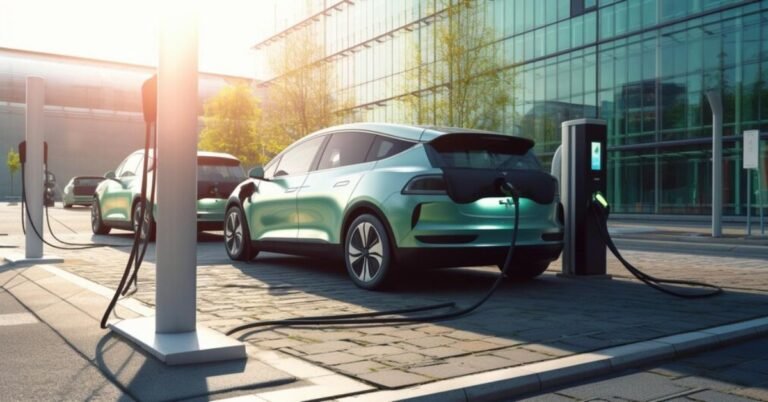Introduction to EV Infrastructure
In the burgeoning era of electric vehicles (EVs), a solid and efficient infrastructure is paramount for supporting the widespread adoption of these eco-friendly vehicles. As the automotive industry pivots towards sustainability, innovations in charging technology become an indispensable aspect of the transition. Integrating dc fast chargers into the EV infrastructure landscape marks a significant milestone. These chargers not only slash charging times but also redefine the user experience, enabling seamless long-distance travel that was once a logistical hurdle for electric vehicle owners. By facilitating rapid energy replenishment, dc fast chargers elevate the practicality and attractiveness of EVs, playing a vital role in accelerating their uptake.
Beyond mere convenience, establishing a robust charging network ensures the viability of EVs as a substitute for gasoline-powered vehicles. This infrastructure extends beyond urban environments, reaching rural areas, and supporting a broad demographic spectrum. The strategic deployment of charging stations is crucial for maintaining momentum in this green revolution, allowing for the simultaneous proliferation of EVs and ensuring that the electric vehicle transition is as smooth and efficient as possible for users worldwide.
Technological Progress in Charging Solutions
The field of EV charging technology is advancing at an unprecedented pace, with leading innovations centered on speed, efficiency, and user-friendliness. High-power charging stations, capable of significantly reducing the time it takes to charge an electric vehicle fully, are at the forefront of these developments. This leap in charging speed is complemented by efforts to enhance compatibility across various electric vehicle models and makes, ensuring a cohesive experience for all EV owners. As the demand for electric vehicles surges, so does the need for underlying systems that can effectively and efficiently support them. Innovations such as predictive charging, which optimizes energy use based on grid demands and user habits, are gaining traction.
Furthermore, the technological progress in charging solutions is not restricted to hardware improvements alone. Software advancements in enhanced user interfaces and mobile applications allow for real-time monitoring of charging status, payment automation, and charging schedule optimization to benefit from lower electricity rates. All these features collectively contribute to a more intuitive and seamless charging experience, driving the appeal of electric vehicles.
Advantages of High-Power Charging Stations
High-power charging stations offer many benefits that can transform the electric vehicle landscape and urban planning. By drastically reducing the charging time, these stations make electric vehicle ownership far more convenient, facilitating longer journeys with minimal interruptions. This capability directly addresses one of the main concerns associated with EV ownership: range anxiety. By providing rapid charging options, these stations enable electric vehicle owners to embark on long trips without meticulously planning charging stops in advance.
Moreover, high-power charging stations contribute broadly to environmental goals by promoting cleaner transportation options. They support transitioning from fossil fuel dependency to more sustainable energy sources by enabling and encouraging widespread EV adoption. These charging hubs also present business opportunities, as integrating such stations into existing commercial spaces can attract environmentally conscious customers eager to support green initiatives in their daily lives.
Current Challenges in EV Infrastructure
Despite the numerous advancements and benefits associated with EV infrastructure, several challenges must be addressed to realize its full potential. One of the primary challenges is the substantial financial investment required to build and maintain comprehensive charging networks. While governments and private enterprises have made strides in funding this development, the ongoing costs of upgrading and expanding the infrastructure can be daunting. Furthermore, a lack of standardized regulations across different regions complicates the situation, as operators may face varying requirements and standards that hinder the smooth rollout of charging solutions.
Addressing these barriers demands concerted efforts from policymakers, industry leaders, and communities to align their goals and work collaboratively. Strategic partnerships can help navigate regulatory landscapes and secure the funding necessary to continue infrastructure expansion, ensuring that electric vehicle charging solutions are accessible to all, regardless of geographic location.
The Global Movement Towards Electrification
The global shift towards electrifying transportation is accelerating, underpinned by strong environmental imperatives and technological feasibility. Countries worldwide recognize the importance of reducing their carbon footprints and are taking concrete actions to facilitate the proliferation of electric vehicles. From issuing mandates for zero-emission vehicle sales to offering tax incentives for EV buyers, governmental strategies are integral to achieving these objectives.
Public enthusiasm for EVs is further supported by growing awareness of climate change and the tangible benefits of sustainable transportation. This cultural shift is prompting manufacturers to expand their electric offerings, creating a virtuous cycle that propels the industry forward. As nations step up their electrification efforts, the corresponding infrastructure must evolve to keep pace, which presents both a challenge and an opportunity for innovation and improvement.
Emerging Future Trends in EV Infrastructure
Looking ahead, the landscape of EV infrastructure is poised for further evolution, shaped by cutting-edge technologies and an increasingly receptive market. Future trends in infrastructure development include the proliferation of vehicle-to-grid (V2G) systems, which allow electric vehicles to communicate directly with power grids. This technology promises increased grid stability and optimized energy consumption, as vehicles can release stored energy back into the grid during peak hours, reducing overall demand on electrical systems.
Additionally, wireless charging stands on the verge of a breakthrough, offering drivers unparalleled convenience through induction technology that charges vehicles without plugging in. This technology could revolutionize how we think about travel and mobility, embedding charging capabilities in everyday infrastructure such as roads and parking spaces. As these innovations come to fruition, integrating such technology into public and private infrastructure will signify a key milestone in electric vehicle uptake and mainstream acceptance.
Concluding Insights
The continual evolution of electric vehicle infrastructure is an enormous challenge and a critically important opportunity for society. By investing in the latest technologies and fostering collaborative approaches among stakeholders, the electric vehicle sector can advance toward sustainable goals that benefit communities across the globe. While challenges remain, the positive trajectory towards a greener future suggests that with perseverance and innovation, electric vehicles will become an integral part of everyday life, contributing to a cleaner, more sustainable planet.

